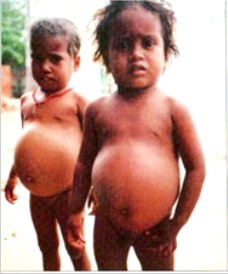What do you consider the ideal macronutrient ratio? People seem to vary on this widely.

What do you consider the ideal macronutrient ratio?
#1
Posted 11 January 2015 - 09:36 PM
#2
Posted 12 January 2015 - 02:06 AM
For longevity? The traditional Okinawan 85/9/6, as also seems optimal in animal studies.
Willcox, D. C., Willcox, B. J., Todoriki, H., & Suzuki, M. (2009). The Okinawan diet: health implications of a low-calorie, nutrient-dense, antioxidant-rich dietary pattern low in glycemic load. Journal of the American College of Nutrition,28(sup4), 500S-516S.
Solon-Biet, S. M., McMahon, A. C., Ballard, J. W. O., Ruohonen, K., Wu, L. E., Cogger, V. C., ... & Simpson, S. J. (2014). The ratio of macronutrients, not caloric intake, dictates cardiometabolic health, aging, and longevity in ad libitum-fed mice. Cell metabolism, 19(3), 418-430.
Practically, a higher protein intake certainly aids in caloric restriction, and its very difficult to go beyond 74/12/14 eating daily nuts and occassional processed foods.
#3
Posted 13 January 2015 - 02:24 AM
80% carbohydrate
15% protein
5% fat
high-ratio of starch to sugar
high-ratio of plant-protein to animal-protein
high-ratio of saturated-fat to polyunsaturated-fat
#4
Posted 13 January 2015 - 02:59 AM
70-80% carbs, mostly complex/high fiber
10-15% protein (prob closer to 10%)
10-20% fat (ideal % probably depends on your genotype, should consist of mostly monosaturated fats)
Edited by prophets, 13 January 2015 - 02:59 AM.
#5
Posted 13 January 2015 - 03:40 AM
I plan to run a three month course each of C/P/F 85/10/5, 40/30/30, 20/25/55 (approx current ratio), and 5/20/75 with bloodwork and stuff after my next birthday. So we shall see. (The optimum for 1 particular adult Caucasian male in his not-quite early thirties).
Why speculate when you can test?
#6
Posted 14 January 2015 - 06:59 PM
I plan to run a three month course each of C/P/F 85/10/5, 40/30/30, 20/25/55 (approx current ratio), and 5/20/75 with bloodwork and stuff after my next birthday. So we shall see. (The optimum for 1 particular adult Caucasian male in his not-quite early thirties).
Why speculate when you can test?
Very interesting! I will be following this thread to see what you find. Are you scheduling blood work after each 3-month interval?
#7
Posted 14 January 2015 - 07:52 PM
That's the plan. I'm also going to try to do a 1 week fast between each to help reset any metabolic gene expression, though the longest I've been totally without food is about 60 hours so we'll see how that goes.Very interesting! I will be following this thread to see what you find. Are you scheduling blood work after each 3-month interval?
#8
Posted 15 January 2015 - 04:01 AM
I eat a 40 protein 40 fat 20 carb diet
Sometimes it may swing closer to 30 protein 50 fat 20 carbs
I have found that if I go much above 20% carbs (being mainly things like black rice or unprocessed brown basmati) i get bloated and sluggish.
I have for about 2 years
My blood sugar is 104, A1C is 5.1
BP = 112/65 Resting Heart Rate = 60
Height 5'10" (178cm) Weight = 175 lbs (78 kilos)
Total cholesterol is below 200 and my HDL/LDL ratio is very healthy
Electrolytes are perfect
An example meal = Large Salad serving bowl of greens with 3-4 extra large eggs over medium, a can of organic chickpeas, olive oil, splash of agave nectar, cashews, shredded cheese, and dried cranberries
I am very active, exercise vigorously daily, and require at least 180 grams protein a day just to maintain muscle mass and tone.
Edited by sensei, 15 January 2015 - 04:11 AM.
#9
Posted 15 January 2015 - 06:19 AM
55% from Carbs
35% from Fats
10% from Proteins
Consume 2200 calories daily, mostly plant-based, and exercise only lightly (ie walking, household chores).
Edited by gamesguru, 15 January 2015 - 06:24 AM.
#10
Posted 27 January 2015 - 10:08 PM
For longevity? The traditional Okinawan 85/9/6, as also seems optimal in animal studies.
When I read that, I plugged the ratios into cronometer, and I wondered, how could Okinawan's not be seriously deficient in protein?
According to US & Canadian Dietary Reference Intake guidelines, women aged 19–70 need to consume 46 grams of protein per day, while men aged 19–70 need to consume 56 grams of protein per day to avoid a deficiency.[22] The generally accepted daily protein dietary allowance, measured as intake per kilogram of body weight, is 0.8 g/kg.[18]
#11
Posted 28 January 2015 - 04:11 AM
#12
Posted 28 January 2015 - 02:54 PM
I don't know of any cases of protein deficiency in the modern world. There's not even a medical term for it. I've eaten 10% protein for nearly 4 years now and my health has been the best it ever has.
Kwashiorkor: protein deficiency while eating sufficient calories.
These children have kwashiorkor.

#13
Posted 28 January 2015 - 03:47 PM
The original etymology of "kwashiokor" in the Ga language of Ghana is a ritual name given to a second child, and kwashiokor came to be known as the disease associated with the birth of a second child. In this part of the of the world, the first child would be prematurely weaned off breast milk and onto porridges of the local, very low protein staples of taro (1% of energy from protein) or cassava (2.4 %). Famine excepted, it was rare in other parts of Africa where sorghum (13.5%) or teff (15.3%) were staples.
Western grain staples typically have much higher levels of protein than tropical tubers, even cream of wheat has 11.4% protein, which is why overt protein deficiency was given its name in West Africa.
Edited by Darryl, 28 January 2015 - 03:50 PM.
#14
Posted 29 January 2015 - 12:17 AM
1750 calories, 15% protein, 35% fat, 50% carbs. The fat includes only 13 mg cholesterol per day. The carbs are almost all complex. The protein is 100% plant based.
#15
Posted 29 January 2015 - 07:14 AM
I don't know of any cases of protein deficiency in the modern world. There's not even a medical term for it. I've eaten 10% protein for nearly 4 years now and my health has been the best it ever has.
Carbohydrates spare protein-oxidation. The more carbohydrates and total calories you eat, the less protein intake you need to grow and maintain the body structure.
I don't know of any cases of protein deficiency in the modern world. There's not even a medical term for it. I've eaten 10% protein for nearly 4 years now and my health has been the best it ever has.
Kwashiorkor: protein deficiency while eating sufficient calories.
These children have kwashiorkor.
Those kids have visceral-fat accumulation due to excessive lipolysis. Lipolysis is inhibited by carbohydrate and protein intake.
1750 calories, 15% protein, 35% fat, 50% carbs. The fat includes only 13 mg cholesterol per day. The carbs are almost all complex. The protein is 100% plant based.
what type of fat is the 35% composed of?
#16
Posted 29 January 2015 - 11:42 PM
I don't know of any cases of protein deficiency in the modern world. There's not even a medical term for it. I've eaten 10% protein for nearly 4 years now and my health has been the best it ever has.
Kwashiorkor: protein deficiency while eating sufficient calories.
These children have kwashiorkor.
Those kids have visceral-fat accumulation due to excessive lipolysis. Lipolysis is inhibited by carbohydrate and protein intake.
Excessive lipolysis on a 95% carb diet? What's actually happening here is that they don't have enough of the amino acids, methionine and serine to produce sufficient choline to export fat from the liver.
Edited by Chupo, 29 January 2015 - 11:42 PM.
#17
Posted 29 January 2015 - 11:53 PM
I don't know of any cases of protein deficiency in the modern world. There's not even a medical term for it. I've eaten 10% protein for nearly 4 years now and my health has been the best it ever has.
Kwashiorkor: protein deficiency while eating sufficient calories.
These children have kwashiorkor.
You're gonna use an example from a third world country?
#18
Posted 30 January 2015 - 12:17 AM
You're gonna use an example from a third world country?
If you can find an example from the first world, I'd be happy to use it. Good luck.
#19
Posted 30 January 2015 - 05:09 AM
...snip...
1750 calories, 15% protein, 35% fat, 50% carbs. The fat includes only 13 mg cholesterol per day. The carbs are almost all complex. The protein is 100% plant based.
what type of fat is the 35% composed of?
Typically nuts and seeds with some olive oil and ground flaxseed. I carefully balance the omega-3 and omega-6 fatty acids in my diet. Saturated fats are kept below 10 g per day. So far good results with the cholesterol numbers.
#20
Posted 30 January 2015 - 10:10 AM
You're gonna use an example from a third world country?
If you can find an example from the first world, I'd be happy to use it. Good luck.
That was the other users point. This is extremely rare in the civilized world!
Regardless of what diet someone chooses to be on.
#21
Posted 30 January 2015 - 08:19 PM
You're gonna use an example from a third world country?
If you can find an example from the first world, I'd be happy to use it. Good luck.
That was the other users point. This is extremely rare in the civilized world!
Regardless of what diet someone chooses to be on.
He said "modern world." The children I posted are modern children. Protein deficiency on an adequate calorie diet is indeed rare but not non-existent.
#22
Posted 30 January 2015 - 09:17 PM
Those kids have visceral-fat accumulation due to excessive lipolysis. Lipolysis is inhibited by carbohydrate and protein intake.
Will you stop at nothing to promote your starch-based diet? That is NOT visceral fat accumulation, it's edema.
Kwashiorkor is a severe form of malnutrition, caused by a deficiency in dietary protein. The extreme lack of protein causes an osmotic imbalance in the gastro-intestinal system causing swelling of the gut diagnosed as an edema or retention of water.[8]
Extreme fluid retention observed in individuals suffering from kwashiorkor is a direct result of irregularities in the lymphatic system and an indication of capillary exchange. The lymphatic system serves three major purposes: fluid recovery, immunity, and lipid absorption. Victims of kwashiorkor commonly exhibit reduced ability to recover fluids, immune system failure, and low lipid absorption, all of which result from a state of severe undernourishment. Fluid recovery in the lymphatic system is accomplished by re-absorption of water and proteins which are then returned to the blood. Compromised fluid recovery results in the characteristic belly distension observed in highly malnourished children.[9]
#23
Posted 31 January 2015 - 01:26 AM
You're gonna use an example from a third world country?
If you can find an example from the first world, I'd be happy to use it. Good luck.
That was the other users point. This is extremely rare in the civilized world!
Regardless of what diet someone chooses to be on.
He said "modern world." The children I posted are modern children. Protein deficiency on an adequate calorie diet is indeed rare but not non-existent.
Modern children. Modern society?
Tell us, where do you see this in the first world?
Edited by TheFountain, 31 January 2015 - 01:26 AM.
#24
Posted 31 January 2015 - 07:08 AM
Modern ≠ first world.
#25
Posted 31 January 2015 - 04:06 PM
You MIGHT see it in vegans, but most of them get 40g daily through grains, soy, pulses, nuts, and seeds. Google 'kwashiorkor vegan', you'll see there are some reports, though mostly in adults.
#26
Posted 01 February 2015 - 06:36 PM
Interesting new study on one of my interests (metabolic endotoxemia) that confirms benefits of both very low fat (8.1% E) and very high fat (73.9% E) diets on plasma endotoxins and inflammatory markers compared to something approximating the Western diet (48% E).
Benoit, B., Laugerette, F., Plaisancie, P., Geloen, A., Bodennec, J., Estienne, M., ... & Michalski, M. C. (2015). Increasing fat content from 20 to 45 weight% in a complex diet induces lower endotoxemia parallel with an increased number of intestinal goblet cells in mice. Nutrition Research.
Only vHFD mice significantly increased body weight and fat mass vs LFD mice. This was associated with increases of plasma concentrations of triglycerides, leptin and adiponectin, and liver lipids. No such differences were observed between LFD and mHFD mice. However, mHFD developed metabolic endotoxemia and inflammation, unlike vHFD mice. In turn, vHFD mice showed more goblet cells in all intestine segments vsboth other groups, and a decrease of Bacteroides-Prevotella in their microbiota vs LFD mice. Finally, mHFD mice colon exhibited a decrease in lactobacilli and in the levels of occludin phosphorylation. Altogether, using complex HFD, no associations were observed between dietary lipid amounts and the magnitude of endotoxemia, inflammation and physiological alterations developed.

#27
Posted 01 February 2015 - 11:49 PM
What is metabolic endotoxemia and what are the implications of this? Basically that very high fat and very low fat resulted in less metabolic endotoxemia, meanwhile medium fat resulted in the most?
#28
Posted 02 February 2015 - 06:17 AM
@Drew_ab: Metabolic endotoxemia is the hypothesis that postprandial transport of endotoxins from the gut is a major contributor to chronic inflammation, contributing to cardiovascular, metabolic, neurodegenerative and other diseases with inflammatory etiologies. Endotoxins (aka lipopolysaccharides) are remnants of the cell walls of gram-negative bacteria, are among the most inflammatory known compounds, and their plasma levels are increased by high fat, high fructose, and high alcohol feeding in both animals and humans. It's a fairly hot topic, an abbreviated list of just reviews would include: Stoll et al 2004, Cani et al 2008, Erridge 2008, Rao et al 2008, Spruss & Bergheim 2009, Abu-Shanab & Quigley 2010, Manco et al 2010, Erridge 2011, Chang & Li 2011, Delzenne 2011, Frazier et al 2011, Laugerette et al 2011, Alisi et al 2012, Kelly et al 2012, Moreira et al 2012, Yilmaz 2012, Jin & Flavell 2013, Miele et al 2013, Neves et al 2013, Piya et al 2013a, Piya et al 2013b, Bleau et al 2014, Daulatzai 2014, Herika & Erridge 2014, Jialal & Rajamani 2014, Shen et al 2014
#29
Posted 02 February 2015 - 11:59 PM
You MIGHT see it in vegans, but most of them get 40g daily through grains, soy, pulses, nuts, and seeds. Google 'kwashiorkor vegan', you'll see there are some reports, though mostly in adults.
Yes, I do believe I have seen this in one vegan. His diet consisted of Matza crackers and fruit Jam.
#30
Posted 03 February 2015 - 03:24 AM
@Drew_ab: Metabolic endotoxemia is the hypothesis that postprandial transport of endotoxins from the gut is a major contributor to chronic inflammation, contributing to cardiovascular, metabolic, neurodegenerative and other diseases with inflammatory etiologies. Endotoxins (aka lipopolysaccharides) are remnants of the cell walls of gram-negative bacteria, are among the most inflammatory known compounds, and their plasma levels are increased by high fat, high fructose, and high alcohol feeding in both animals and humans. It's a fairly hot topic, an abbreviated list of just reviews would include: Stoll et al 2004, Cani et al 2008, Erridge 2008, Rao et al 2008, Spruss & Bergheim 2009, Abu-Shanab & Quigley 2010, Manco et al 2010, Erridge 2011, Chang & Li 2011, Delzenne 2011, Frazier et al 2011, Laugerette et al 2011, Alisi et al 2012, Kelly et al 2012, Moreira et al 2012, Yilmaz 2012, Jin & Flavell 2013, Miele et al 2013, Neves et al 2013, Piya et al 2013a, Piya et al 2013b, Bleau et al 2014, Daulatzai 2014, Herika & Erridge 2014, Jialal & Rajamani 2014, Shen et al 2014
High fructose scares me. I'm really thinking I need to reconsider the amount of fruit in my diet. It's about 20-25% of my calories, though it's mostly from berries and cherries, it might be too much.
Thanks for the explanation.
Also tagged with one or more of these keywords: macronutrient, ratio, ideal, diet
Science & Health →
Lifestyle →
Nutrition →
Adding Turmeric to my dietStarted by Galaxyshock , 20 Mar 2024 |
|

|
||
Science & Health →
Lifestyle →
How to Outlive Peter AttiaStarted by Cloomis , 09 Jun 2023 |
|

|
||
Science & Health →
AgingResearch →
Supercentenarians →
Is Chanpuru responsible for Okinawan LongevityStarted by sensei , 03 Feb 2022 |
|

|
||
Round Table Discussion →
Risks & Survival →
Productivity of populations in the past were dependent on the dietStarted by kurdishfella , 20 Jul 2021 |
|

|
||
Science & Health →
Lifestyle →
Nutrition →
Pure macronutrient dietStarted by timedilation , 11 Jul 2021 |
|

|
0 user(s) are reading this topic
0 members, 0 guests, 0 anonymous users































































